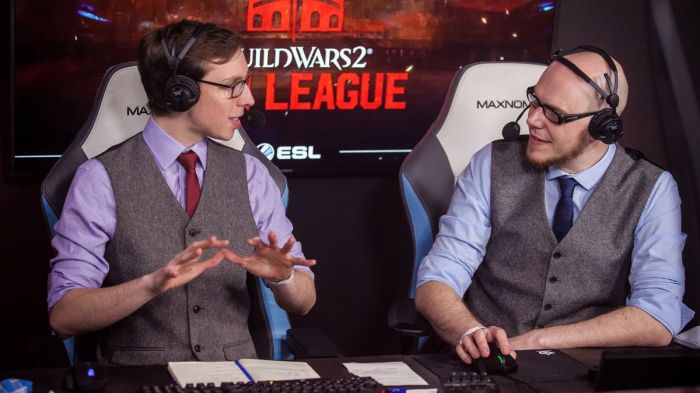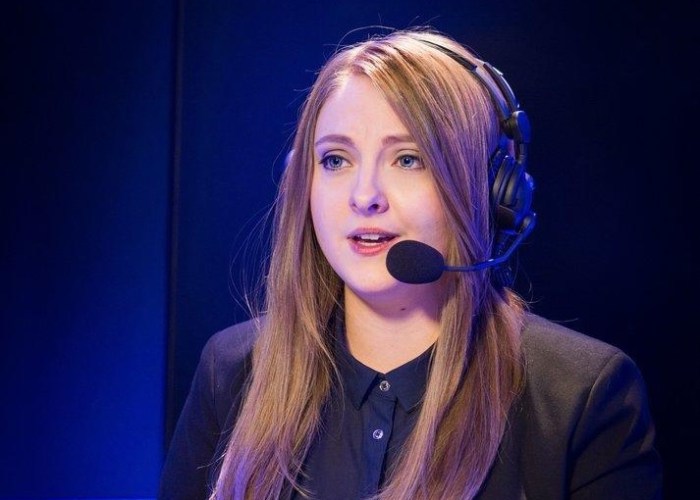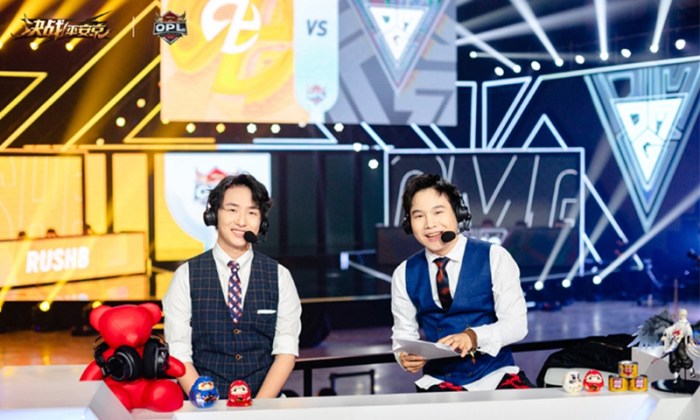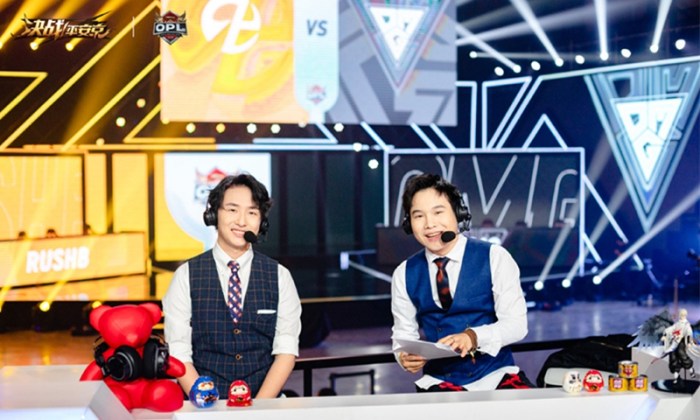Esports commentary isn’t just about calling plays; it’s about crafting a narrative, building hype, and connecting with viewers. From the early days of shoutcasting in basements to the polished productions of today, esports commentary has evolved dramatically, mirroring the growth of the esports industry itself. We’ll explore the history, techniques, and future of this vital part of competitive gaming.
This deep dive will cover everything from the different styles of commentary (play-by-play, color, analysis) to the essential skills of a successful caster. We’ll examine how technological advancements have impacted delivery, discuss the challenges casters face, and even peek into potential future trends like AI integration and augmented reality. Get ready to level up your understanding of esports commentary!
The Evolution of Esports Commentary

Esports commentary has undergone a dramatic transformation since its nascent days, evolving from rudimentary shoutcasting to the highly produced, professional broadcasts we see today. This evolution reflects not only the growth of the esports industry itself but also advancements in technology and a deepening understanding of how to effectively engage viewers. The early days were characterized by a more informal, often chaotic, style, while today’s commentary is meticulously planned and executed, aiming for a polished and informative experience.Early esports commentary often lacked the polish and professionalism of modern broadcasts.
Think back to the early days of StarCraft, for example. Commentary was frequently raw, driven by passion and excitement, with a focus on play-by-play descriptions and less on strategic analysis. This style, while lacking in sophistication, was undeniably engaging, fueled by the novelty and rapid growth of the scene. The focus was heavily on the action itself, and the commentators, often players themselves, were more like enthusiastic friends sharing the experience.
Commentary Styles Across Game Genres
Different game genres necessitate different commentary approaches. Fast-paced games like Counter-Strike: Global Offensive (CS:GO) and Overwatch demand rapid-fire commentary, highlighting individual actions and quick decision-making. The commentators need to be able to keep up with the frenetic pace, quickly identifying key moments and explaining their significance. In contrast, slower-paced games like Dota 2 and League of Legends (MOBAs) allow for more in-depth strategic analysis.
Commentators can spend time explaining team compositions, item builds, and overall game plans, providing viewers with a deeper understanding of the competitive landscape. Fighting games, such as Street Fighter or Tekken, require commentators with a strong understanding of the game’s intricate mechanics and character matchups. They need to explain complex combos and predict the outcomes of strategic decisions.
Key Figures in Esports Commentary
Several individuals have significantly shaped the evolution of esports commentary. For example, Day[9] (Sean Plott) played a pivotal role in popularizing StarCraft commentary through his engaging and informative style, combining technical expertise with an entertaining personality. His impact on the scene was significant, establishing a standard for professionalism and accessibility. Similarly, TobiWan (Toby Dawson) and LD (Lee Dong-jun) are widely considered legends in Dota 2 commentary, known for their captivating storytelling and insightful analysis.
Their unique styles and extensive knowledge of the game helped to elevate Dota 2 commentary to a new level, setting a benchmark for other games.
Technological Advancements in Commentary Delivery
Technological advancements have profoundly impacted esports commentary delivery. The shift from simple webcam broadcasts to sophisticated studio setups with multiple cameras, professional graphics, and advanced replay systems has drastically improved the viewing experience. High-quality audio equipment ensures clear and crisp commentary, while slow-motion replays and other visual aids enhance the viewers’ understanding of the gameplay. The integration of social media and interactive elements, such as polls and viewer questions, has also enhanced engagement.
Furthermore, the rise of streaming platforms like Twitch and YouTube has broadened the reach of esports commentary, allowing for a global audience to access and enjoy high-quality broadcasts.
The Role of the Esports Caster
Esports casting isn’t just about narrating the action; it’s about creating an immersive and engaging experience for viewers. A great caster breathes life into the competition, transforming a digital battleground into a captivating spectacle. They’re the storytellers of the esports world, weaving together gameplay with insightful analysis and compelling personality.A successful esports caster needs more than just a passion for gaming; they need a unique blend of skills and qualities to truly shine.
Essential Skills and Qualities of a Successful Esports Caster
The ideal esports caster possesses a multifaceted skill set. Technical knowledge of the game is paramount; they need to understand the intricacies of gameplay, strategies, and player mechanics to provide informed commentary. Beyond that, strong communication skills are crucial. Casters need to articulate complex ideas clearly and concisely, keeping the audience engaged regardless of their level of expertise.
A captivating voice and excellent pacing are also vital for maintaining viewer interest. Finally, the ability to adapt to unexpected events, remain calm under pressure, and maintain a positive and energetic presence on-air is essential. Think of casters like MonteCristo and Doa, known for their deep game knowledge combined with their engaging personalities and ability to explain complex strategies in an easily digestible manner.
Their success highlights the importance of this holistic skillset.
Challenges Faced by Esports Casters and Potential Solutions
Esports casting, while exciting, presents several challenges. Maintaining consistent energy levels over long casting sessions can be draining. Solutions include implementing proper rest breaks and pacing techniques, ensuring the casters have adequate support staff and a comfortable broadcast environment. Another significant challenge is adapting to the ever-evolving meta of games. Constant learning and staying updated on patches, strategy shifts, and player developments are crucial.
To address this, casters can actively engage with the community, participate in online forums and discussions, and collaborate with professional players and analysts. Finally, dealing with technical difficulties and unexpected situations, such as internet outages or game crashes, requires quick thinking and problem-solving skills. Having a well-rehearsed backup plan and a strong support team can mitigate the impact of such disruptions.
Hypothetical Scenario: Contrasting Casting Styles, Esports commentary
Imagine a scenario where two casters are paired: one, a highly analytical caster known for their in-depth strategic breakdowns, and the other, a more enthusiastic and energetic caster who focuses on the excitement and drama of the moment. The analytical caster might focus on meticulously explaining the intricate team compositions and strategic choices, while the energetic caster would highlight individual player performances and clutch moments, injecting humor and excitement into the commentary.
The potential outcome is a balanced broadcast; the analytical caster provides context and depth, while the energetic caster keeps the audience engaged. However, there’s a risk of clashing styles if not managed effectively. The key is for them to complement each other, creating a dynamic duo that caters to a wider audience. The synergy between these contrasting styles can create a more enriching viewing experience.
Effective Communication and Collaboration Enhancing the Viewing Experience
Effective communication and collaboration between casters are fundamental to a positive viewing experience. A seamless transition between speakers, clear articulation of ideas, and a shared understanding of the game’s nuances are all crucial. When casters work well together, they create a natural flow of information, avoiding redundancy and ensuring the audience stays informed and entertained. For example, a well-coordinated casting team might seamlessly transition from a detailed strategic analysis to a thrilling play-by-play account, maintaining viewer interest and preventing the commentary from becoming monotonous or overly technical.
This synergistic approach allows for a richer and more engaging viewing experience.
The Future of Esports Commentary

Esports commentary is constantly evolving, mirroring the rapid advancements in technology and the ever-changing landscape of competitive gaming. We’re not just talking about better mics and fancier studios; we’re talking about a fundamental shift in how we experience and understand esports competition. The future promises a more immersive, personalized, and data-driven approach to commentary, blurring the lines between spectator and participant.The integration of advanced technologies will dramatically reshape the role of the esports commentator.
This isn’t just about adding flashy graphics; it’s about leveraging technology to enhance the viewing experience and provide deeper insights into the gameplay.
AI-Assisted Commentary and Augmented Reality
AI will play a significant role in enhancing commentary. Imagine AI providing real-time statistical analysis, predicting player actions based on past performance, or even generating commentary snippets based on specific in-game events. This isn’t meant to replace human commentators; instead, it’s about augmenting their abilities, allowing them to focus on narrative and insightful analysis while AI handles the data crunching.
We’ve already seen early examples of AI integration in sports broadcasting; think of automated highlights or real-time stats overlays. In esports, this could be even more sophisticated, providing insights into individual player performance metrics that are difficult for a human to track in real-time. Augmented reality (AR) will further enhance this, overlaying these AI-generated insights directly onto the game footage, creating a richer, more informative visual experience for the viewer.
Picture a scenario where the commentator points out a subtle strategic shift by a player, and the AR overlay immediately highlights the relevant data points – a sudden increase in their APM (Actions Per Minute), or a change in their build order – visually reinforcing the commentator’s analysis.
Adapting to Evolving Game Designs and Gameplay Mechanics
The rapid evolution of game design presents a unique challenge for esports commentators. New games with complex mechanics and ever-shifting metas require constant learning and adaptation. Commentators of the future will need to be highly adaptable, possessing a deep understanding of game theory and the ability to quickly grasp new gameplay mechanics. Think about the shift from traditional MOBAs like Dota 2 to the faster-paced, more strategically diverse world of Valorant.
Commentators who could effortlessly analyze macro-level strategies in Dota 2 had to quickly learn the intricacies of agent abilities, map control, and round-based strategies in Valorant. Future commentators will need to possess a broader skill set, perhaps specializing in a genre or a few closely related titles, but maintaining a high level of adaptability across different game styles.
New Roles and Responsibilities for Esports Commentators
The role of the esports commentator will expand beyond simply describing the action. We can expect to see the emergence of specialized roles, such as data analysts who integrate real-time game data into the commentary, or narrative directors who craft compelling storylines around the competition. Imagine a commentator team that includes a gameplay expert, a data analyst, and a narrative director, all working together to deliver a cohesive and engaging broadcast.
This collaborative approach allows for a deeper and more nuanced understanding of the game and its competitive context. Furthermore, commentators may take on more interactive roles, engaging directly with the audience through social media or in-game chat features, fostering a stronger sense of community and participation.
Hypothetical Esports Broadcast in 2033
Ten years from now, an esports broadcast might look something like this: The game is displayed in a high-resolution, immersive 3D environment, possibly even with holographic elements. The commentary team, consisting of a gameplay expert, a data analyst, and a narrative director, are situated in a virtual studio, their avatars interacting with each other and with the game world.
AI-generated graphics and overlays provide real-time statistical analysis, highlighting key moments and strategic decisions. The audience can interact with the broadcast through personalized interfaces, selecting preferred camera angles, data overlays, and commentary styles. The entire experience is hyper-personalized, tailoring the broadcast to each individual viewer’s preferences and level of expertise. Imagine a situation where a viewer unfamiliar with the game chooses a simplified commentary track with basic explanations, while a seasoned pro opts for a more in-depth analysis focused on advanced strategies.
This personalized approach would create a far more inclusive and engaging viewing experience.
Case Studies

Analyzing successful esports commentary teams reveals key strategies and approaches that contribute to engaging and informative broadcasts. By examining their styles, strengths, and weaknesses, we can gain valuable insights into what makes great esports commentary.
This section will delve into three prominent examples, highlighting their unique characteristics and offering a comparative analysis. Understanding these diverse approaches can help aspiring casters develop their own styles and improve their overall performance.
Successful Esports Commentary Teams: A Comparative Analysis
| Team Name | Commentary Style | Strengths | Weaknesses |
|---|---|---|---|
| Riot Games’ League of Legends World Championship Team (e.g., Deficio, Quickshot, CaptainFlowers) | Highly analytical, strategic focus, deep game knowledge, blend of excitement and expert insight, often incorporating humor and engaging banter. They balance detailed explanations with accessible language for a wide audience. | Exceptional game knowledge, clear and concise explanations, ability to build narrative and excitement, strong chemistry between commentators, engaging personality, adaptation to different game phases. | Can sometimes get overly technical, potentially losing less experienced viewers, reliance on pre-existing knowledge of the game from viewers, pacing can occasionally feel slow for fast-paced moments. |
| Valve’s Dota 2 International Commentary Team (e.g., SyndereN, ODPixel, TobiWan) | Energetic, fast-paced, highly enthusiastic, often prioritizing excitement and engaging personalities over in-depth analysis. Focus on immediate action and player reactions. | High energy, excellent at capturing the excitement of the moment, strong connection with the audience, diverse casting styles complement each other, readily understandable even without deep game knowledge. | Can lack detailed strategic analysis, potentially overlooking important strategic elements, occasional over-the-top enthusiasm might distract from crucial moments, reliance on hype can sometimes feel artificial. |
| Overwatch League Commentary Teams (various teams and casters) | Varied, depending on the specific team; generally a mix of analytical and enthusiastic styles. Often features multiple casters with different specializations, allowing for a comprehensive coverage of the game. Strong emphasis on player stories and personalities. | Adaptability to different casting styles and team compositions, strong focus on player narratives, creating engaging stories around the teams and players, balanced approach between analysis and excitement. | Consistency can be an issue due to the rotation of casters and teams, maintaining a consistent level of analysis across different matches can be challenging, sometimes too much focus on player personalities can overshadow the gameplay. |
Visual Elements and Commentary Integration

Visual elements are absolutely crucial in esports commentary; they’re not just window dressing, they’re a core part of the storytelling. Think of it like a movie – the visuals and the soundtrack (commentary) work together to create a complete and engaging experience. Without the visuals, the commentary would feel flat and disconnected, leaving the audience struggling to visualize the action.Effective integration of visuals and commentary creates a more immersive and exciting experience for viewers.
It allows commentators to paint a vivid picture of the action, highlighting key moments and strategic decisions in a way that words alone simply can’t. This synergy helps viewers understand the nuances of gameplay, even if they aren’t expert players themselves. It’s about painting a picture with words, but having the visuals reinforce and amplify that picture.
Replays and Highlight Integration
Replays are the commentator’s best friend. They provide the opportunity to dissect crucial moments, pointing out subtle details that might have been missed in real-time. By slowing down the action, zooming in on specific players or objects, and offering multiple camera angles, replays give the commentators the tools to build a compelling narrative. Graphics, such as kill feeds, health bars, and mini-maps, further enhance this by providing context and information that complements the commentary.
Commentators should strategically use replays to highlight impressive plays, explain strategic decisions, or analyze mistakes, effectively weaving them into the flow of their commentary.
Camera Angles and Commentary Coordination
Different camera angles offer unique perspectives on the gameplay. A wide shot might showcase the overall battlefield strategy, while a close-up on a player’s character can emphasize their individual performance or emotional state. Commentators should be aware of the current camera angle and use this knowledge to guide their descriptions. For instance, a switch to a close-up on a player’s character during a crucial moment allows the commentator to emphasize the player’s focus and skill.
The commentator could then describe the tension and pressure the player is under.
Example of Commentary with Visual Cues
Let’s imagine a key moment in a
League of Legends* match. The opposing team is pushing towards the enemy Nexus. The replay shows a close-up on the ADC (Attack Damage Carry) as they skillfully weaves through enemy fire, using their ultimate ability to secure a triple kill. The commentator could say something like
“And there it is! The replay shows just how incredible that positioning was from ‘Ace’ on Ashe. See how he perfectly timed his ultimate, ‘Enchanted Crystal Arrow,’ catching three members of the opposing team completely off guard! The camera angle highlights his calm demeanor even under immense pressure, securing the triple kill and essentially buying his team the time they needed to defend their Nexus.
That was a clutch play, folks, a truly game-changing moment!”
Question & Answer Hub: Esports Commentary
What’s the difference between play-by-play and color commentary?
Play-by-play focuses on the immediate action, describing what’s happening in real-time. Color commentary provides analysis, background information, and insights into player strategies.
How do I become an esports commentator?
Start by mastering a game, practicing your commentary skills, networking with other casters and organizations, and creating demo reels to showcase your abilities. Persistence and a passion for the game are essential.
What software/hardware do esports commentators use?
Common tools include professional-grade microphones, audio interfaces, streaming software (OBS, XSplit), and potentially voice-processing software for improved audio quality.
How important is knowing the game’s meta?
Crucial! Understanding current strategies, popular picks, and common team compositions allows for insightful and relevant commentary.
